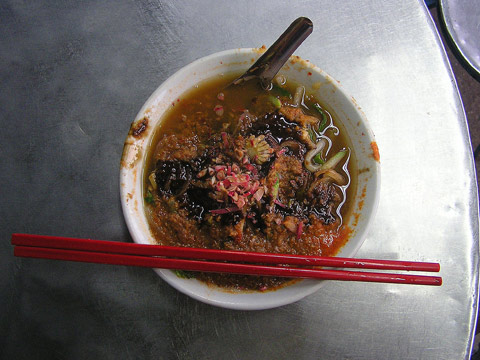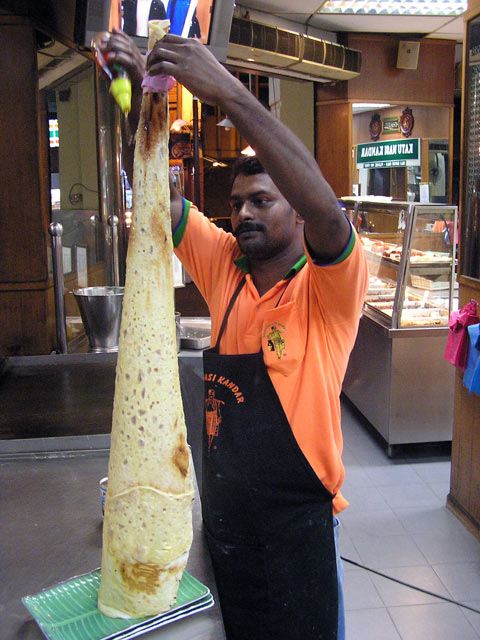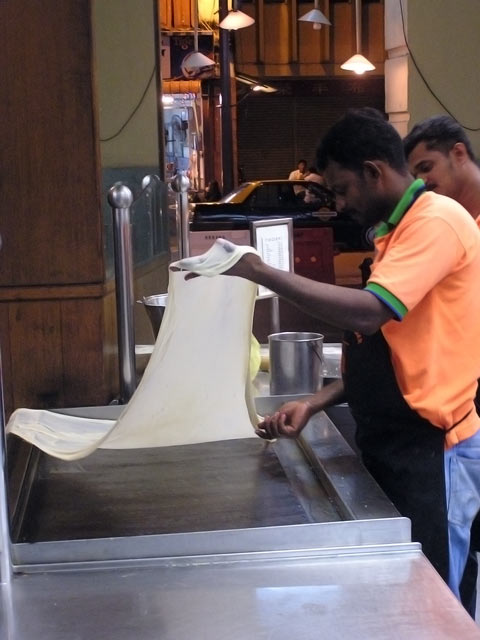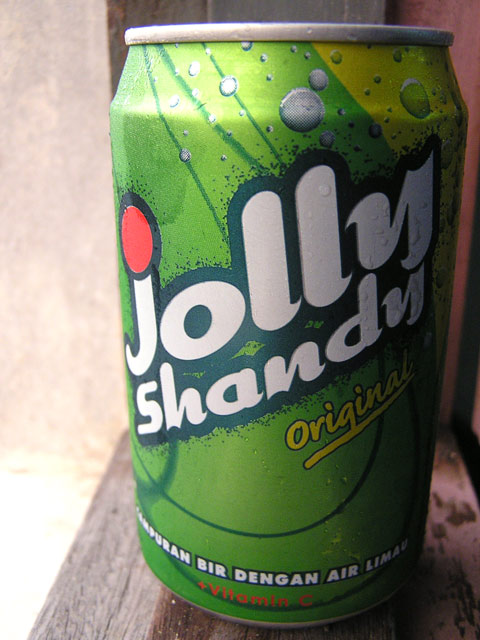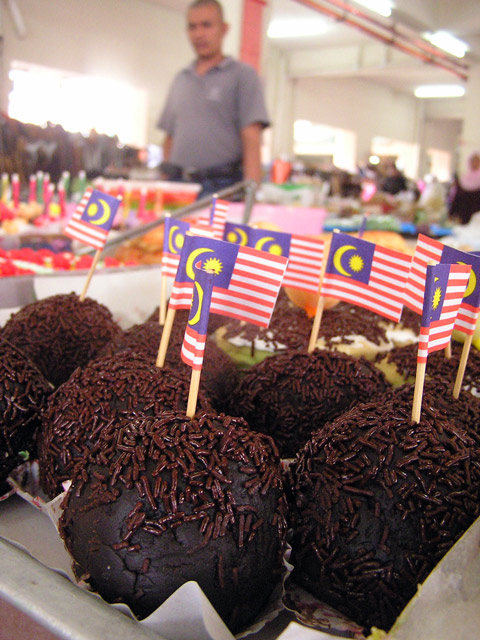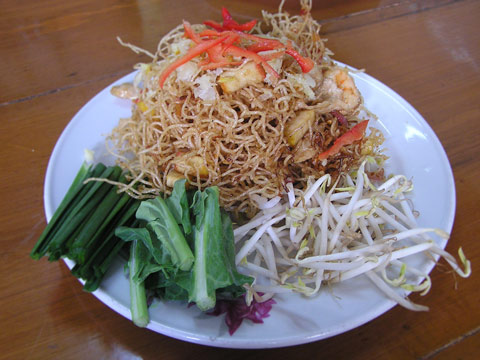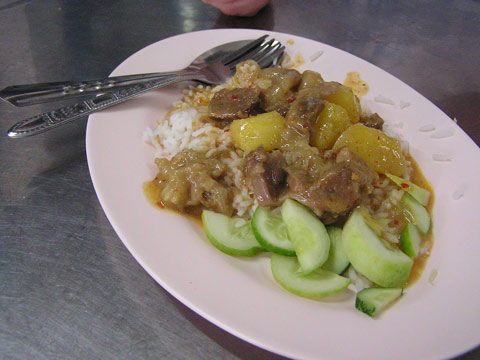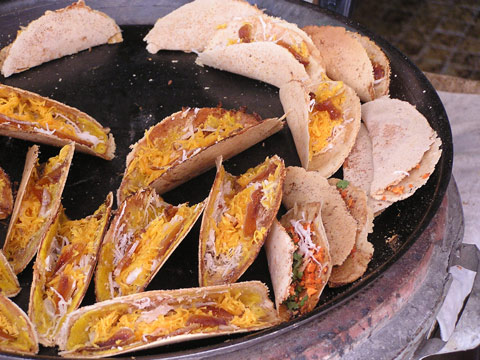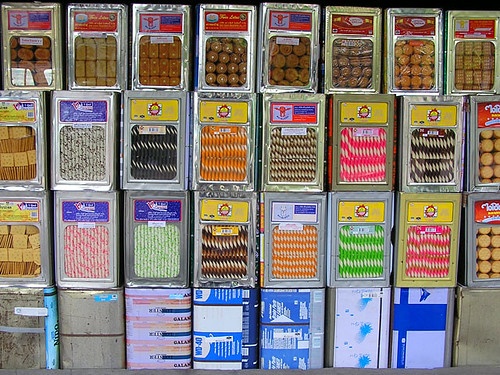
Night market in front of wat at Maehongson
The road to Mae Hong Son in Northwest Thailand is dream trip for motorcyclists. A road of endless switchbacks, freshly paved, glides you through hidden valleys filled with stepped rice paddies, small farms, streams revealing waterfalls, hidden caves and palaces abandoned until the next warm season drives royalty into the highlands. Bamboo arches over the road in the lower reaches of the hills to be replaced by stark pine forest as you snake your way up the summits.
The road runs close enough to Burma for bored Thai military police to be stationed every few kilometres checking for contraband or smuggled people but unconcerned with Westerners on motorbikes. Lookout points stare over the mountain ranges. By all rights there should be no great reward at the end so as to prove a cliché about the intrinsic nature of journeys and destinations. But there is and it’s Baan Phleng Restaurant.

If there is one thing that I’ve learnt about dining in Southeast Asia, it is to avoid any restaurant with the words “authentic”, “local”, or “traditional” plastered out the front in English. It is the sign that the restaurant embodies none of those things and most often personifies the opposite. In this case, I was wrong. Contained within the ornate temple-cabinet were five or six dishes, only one of which was entirely familiar, the rest were surprises.

The great thing about an average firm tofu is that it carries fat and meat flavours so well and thus is wasted on vegetarians. Fatty and chilli-hot carnivore tofu.

I’d spotted bundled, spiralling fronds of ferns at the northern Thai markets in Pai, Chiang Mai and Mae Hong Son itself, but resigned myself to not being able to find it on a restaurant menu because I couldn’t find the Thai word for it and was too embarrassed to phone a friend for translation help. I’d mentally consigned it to that group of foods that I believe, rightly or otherwise, only get cooked at home and never see the light of day on a restaurant menu in one of the languages that I can read. Despite the large amount of sesame seeds and deep fried garlic mixed through, the above fronds had a nutty flavour all of their own.
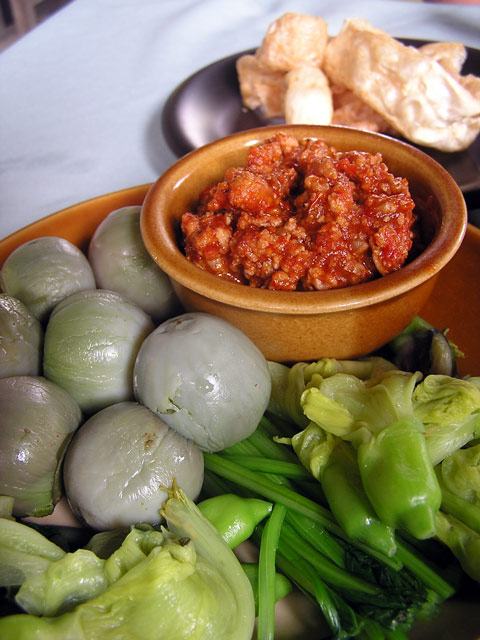
Nam prik, a tub of ground pork as hot as freshly-dropped napalm, accompanied by eggplant and flowers. Any botanical help on the steamed flowers served alongside the pork would be much appreciated. I snapped what I think is the flower on the plant from which it came, but can’t be sure.
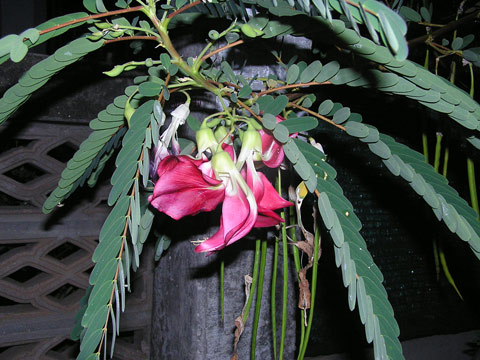
As an ingredient, they might make for a workable local substitute for zucchini or pumpkin flowers, although much more fragile and slightly bitter.
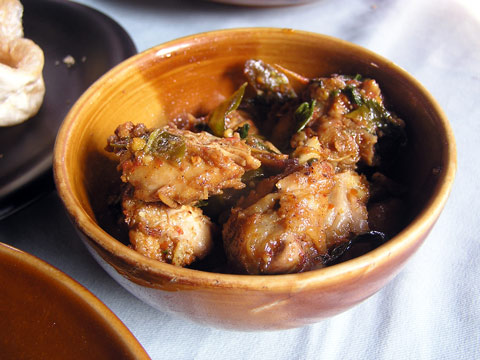
Gaeng Kai Mae Hong Son – Chicken curry with lime leaves aplenty and a few local herbs that I can’t readily identify.
Location: Baan Phleng Restaurant, on Khunlumpraphat St, Mae Hong Son
Getting there: Hire a motorbike from Chiang Mai, ride at a leisurely pace out to Pai on day one, Soppong on day two and then onto Mae Hong Son on day three. Repeat in reverse, or complete the “Mae Hong Son loop” through Mae Chaem and then back to Chiang Mai. GT-riders.com sells an excellent map.
Or just catch the bus.
Note: Map link points to Baan Phleng restaurant.


